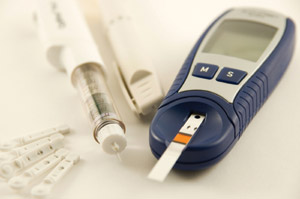Stopping blood flow to the heart is potentially deadly in the form of a heart attack, but new clues suggest there may be some benefits, too… (read more in Nature Medicine).
As an educational consultant specializing in science and health, I am fascinated by the concept of ischemic preconditioning (IPC) and its potential impact on medicine. In my 2009 article “Clues emerge about the benefits of briefly blocking blood flow,” I explored the intricacies of IPC and the role of nitrolinoleic acid (LNO2) in protecting organs during blood flow interruption. This research sheds light on a critical aspect of medical science that could revolutionize the treatment of heart attacks, strokes, and other ischemic conditions.
Understanding Ischemic Preconditioning
IPC represents a paradigm shift in medical science, highlighting the body’s ability to adapt to ischemic stress. Since its discovery in 1986, IPC has intrigued scientists with its protective mechanism against severe oxygen and nutrient loss. The process involves brief, controlled interruptions of blood flow, which somehow fortify the cells against future ischemic events. This concept has been tested in clinical settings, like open-heart surgeries, showing promising results in reducing tissue damage.
The mystery of how IPC works leads to fascinating research avenues. One study on rat heart cells identified LNO2, a fatty acid compound naturally forming in mitochondria during blood flow loss. Remarkably, LNO2 has shown the potential to protect cells from damage when the blood supply is interrupted and then restored. This discovery points to LNO2’s protective effect, even in small quantities.
Exploring the Molecular Mechanisms
The journey to unravel how LNO2 functions in IPC is ongoing. By tagging a synthetic version of LNO2, researchers tracked its interaction with specific mitochondrial proteins. These proteins, involved in mitochondrial uncoupling, redirect energy from ATP production to heat generation. This uncoupling process, intriguingly, might safeguard mitochondria from oxidative damage by free radicals.
Further studies link mitochondrial uncoupling proteins to neuronal protection during strokes, where increased protein levels in damaged brain areas suggest a natural defense mechanism. These insights align with the hypothesis that LNO2 and similar compounds could signal pathways preventing cellular damage.
However, the translation of IPC from experimental models to clinical practice faces challenges. The complexity of the underlying mechanisms and the variability in patient responses necessitate more research. For instance, factors like diabetes, beta-blocker use, and age can affect IPC’s efficacy. Understanding these nuances is crucial for developing targeted, effective treatments.
Bridging Research and Clinical Practice
As an educational consultant, I see the journey of IPC and LNO2 research as an exemplary model for science education. It demonstrates the iterative nature of scientific discovery and the critical need for multidisciplinary collaboration. Educators should incorporate these case studies into curricula to inspire future scientists and healthcare professionals. It’s essential to show students the real-world implications of basic research and the long road to clinical application.
Moreover, this research underscores the importance of continued investment in science and healthcare education. By fostering a deep understanding of biological processes and research methodologies, we can prepare the next generation of scientists to tackle the pressing medical challenges of their time.
The exploration of ischemic preconditioning and nitrolinoleic acid represents a frontier in medical research with significant potential for patient care. As science unravels the complexities of these mechanisms, the prospect of protecting vital organs from ischemic damage becomes increasingly tangible.
In conclusion, the work on IPC and LNO2 is a beacon of hope for advancing medical treatment. It also serves as a vital educational tool, illustrating the profound impact of scientific discovery on human health. As an educational consultant, I am committed to highlighting these advancements and fostering a culture of curiosity and innovation in the field of healthcare education.







